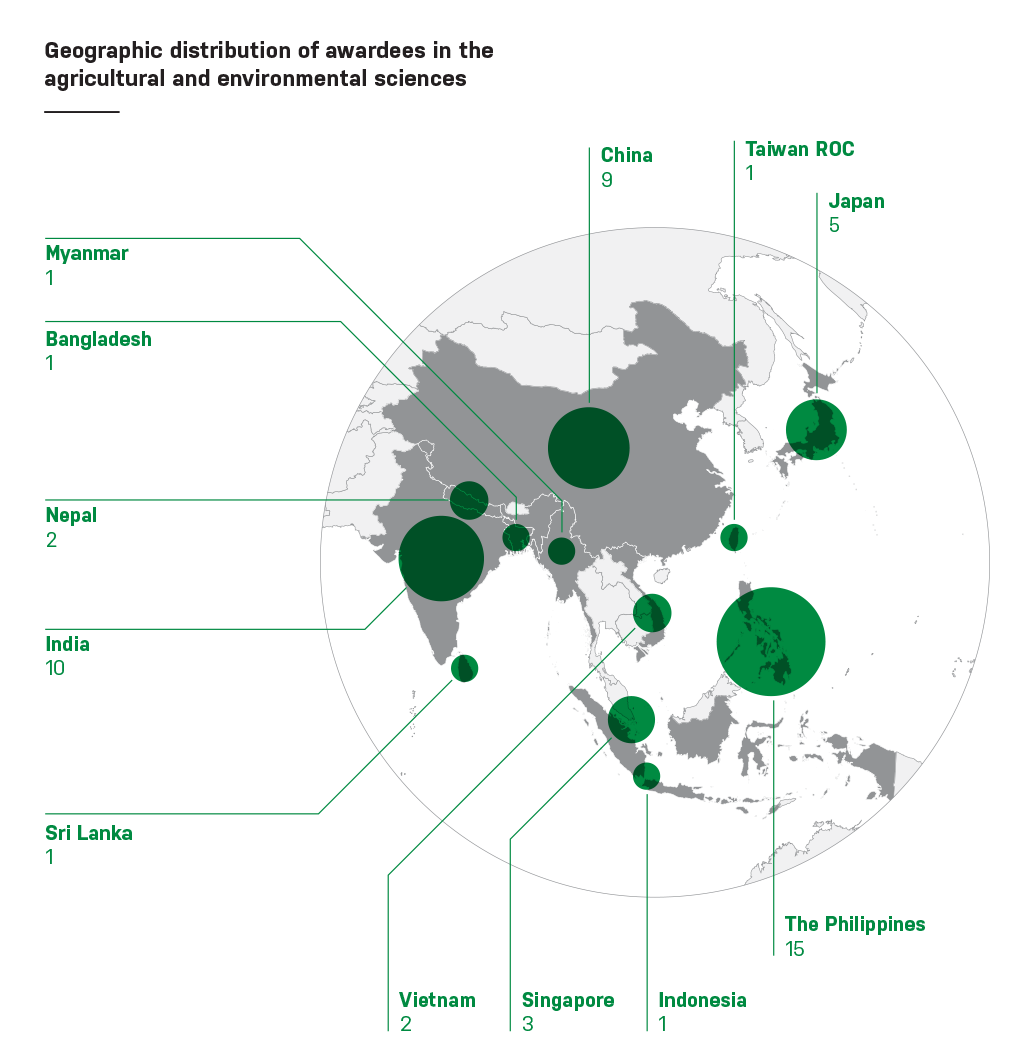[ad_1]
AsianScientist (Feb. 10, 2021) – The great promise of agricultural and environmental sciences in Asia today is the result of the region’s immense economic growth. As Asia’s populations and incomes have grown exponentially over the past two decades, and as regional supply chains have become ever more intertwined with global production networks, Asia’s resources—air, land, water, animal, plant and others—are straining to keep up with demand.
Economic development has, on the one hand, driven the improvement in Asia’s agricultural and environmental science capabilities—but on the other, also the region’s very need for innovation in the space. Asia’s farmers generally produce less food per hectare than other regions. They are also some of the most vulnerable to climate change, including the risk of rising sea levels affecting the salinity of the oil in fertile coastal regions. This combination of factors makes it an exciting time for researchers and practitioners in this space in Asia.
Indeed, over the past few years, a number of success stories have inspired hope in the potential of science and technology to address some of these issues. Consider the Green Horizons project, a collaboration that began in 2014 between IBM and Beijing’s Environmental Protection Bureau (EPB) to improve air quality in the city. Through the use of the Internet of Things, Big Data and machine learning, IBM’s predictive models have helped EPB improve its pollution monitoring and impact assessment.
This in turn has allowed EPB to sharpen its mitigation responses, including curbing urban traffic, construction activity and power generation. In one year, Green Horizons helped Beijing reduce its concentration of ultrafine particulate matter (PM 2.5) by 20 percent. Having incubated the technology in China, IBM is now deploying it overseas.
In a similar vein, Gay Jane Perez, an associate professor at the University of the Philippines Diliman, has pioneered the use of satellite data to improve agricultural crop yields.
Perez, who led the team that sent the Philippines’s first-ever satellite into orbit, uses satellite data to examine parameters like vegetation, surface temperature, rainfall and soil moisture, which in turn allows the prediction of drought impacts. Her research also includes an assessment of how drought evolves through time, which can inform drought forecasts and corresponding mitigation measures.
Alongside such gargantuan projects are numerous small, bootstrapping initiatives across Asia that could grow to have a significant impact on the sector. This includes so-called ‘clean meat’ startups such as Japan-based IntegriCulture and Singapore-based Shiok Meats who are experimenting with growing cultured meat from stem cells. These efforts could, among other things, help mitigate problems with resource depletion and the proliferation of zoonotic diseases and antimicrobial resistance.
Also eager to boost the resilience of Asia’s food supply is Li Jiayang, a plant geneticist who is China’s vice minister of agriculture, as well as a professor and principal investigator at the Institute of Genetics and Developmental Biology, Chinese Academy of Sciences. Li’s research focuses on the molecular genetics of plant development and metabolism for the breeding of high-yield, stress-resistant and resource-efficient new varieties of rice and rubber.
Meanwhile, hoping to wean Asia off its dependence on fossil fuels—much imported—is Witri Wahyu Lestari, a chemist and lecturer at the Sebelas Maret University in Indonesia. Lestari is developing functional hybrid porous materials that can be used for environmental protection, energy storage and drug delivery. Her award-winning research was around designing novel catalysts for obtaining green diesel—fuel produced from non-fossil renewable sources—from palm oil.
“I hope that my research will change society for the better and make an international impact, especially in the areas of environmental sustainability, alternative energy sources and biomedicine,” she said.
It is this relentless innovation across Asia, from the highest offices to the tiniest labs, that makes the agricultural and environmental sciences sector exciting. Discover more exciting scientific developments from the region by downloading the Five Years Of The Asian Scientist 100 white paper here.
———
Copyright: Asian Scientist Magazine. Illustration: Oi Keat Lam/Asian Scientist Magazine
Disclaimer: This article does not necessarily reflect the views of AsianScientist or its staff.
[ad_2]
Source link